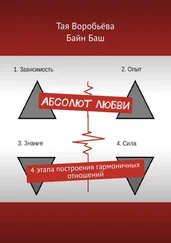Джонсон С. Практика эмоционально-фокусированной супружеской терапии. Создание связей. Научный мир, 2013; Furrow, J., Palmer, G., Johnson, S. M., Faller, G., & Palmer-Olsen, L. (in press). Emotionally focused family therapy: Restoring connection and promoting resilience. New York: Routledge; Hughes, D. (2007). Attachment focused family therapy. New York: Norton.
Wilson, E. O. (1998). Consilience: The unity of knowledge. New York: Vintage Books.
Боулби Д. Привязанность. М.: Гардарики, 2003; Bowlby, J. (1973). Attachment and loss: Vol. 2. Separation: Anxiety and anger. New York: Basic Books; Bowlby, J. (1980). Attachment and Loss: Vol. 3. Loss. New York: Penguin Books; Bowlby, J. (1988). A secure base. New York: Basic Books.
Cassidy, J., & Shaver, P. R. (Eds.). (2008). Handbook of attachment: Theory, research, and clinical applications (2nd ed.). New York: Guilford Press; Mikulincer, M., & Shaver, P. R. (2016). Attachment in adulthood: Structure, dynamics, and change (2nd ed.). New York: Guilford Press.
Mikulincer, M., Birnbaum, G., Woodis, D., & Nachmias, O. (2000). Stress and accessibility of proximity-related thoughts: Exploring normative and intraindividual components of attachment theory. Journal of Personality and Social Psychology, 78, 509–523; Mikulincer, M., & Florian, V. (2000). Exploring individual differences in reactions to mortality salience: Does attachment style regulate terror management mechanisms? Journal of Personality and Social Psychology, 79, 260–273.
Mikulincer, M., Shaver, P. R., & Pereg, D. (2003). Attachment theory and affect regulation: The dynamics, development and cognitive consequences of attachment strategies. Motivation and Emotion, 27, 77–102.
Davila, J., Karney, B. R., & Bradbury, T. N. (1999). Attachment change processes in the early years of marriage. Journal of Personality and Social Psychology, 76(5), 783–802.
Collins, N. L., & Read, S. J. (1994). Cognitive representations of attachment: The structure and functioning of working models. In K. Bartholomew & D. Perlman (Eds.). Advances in personal relationships: Vol. 5. Attachment processes in adulthood (pp. 53–92). London: Jessica Kingsley.
Bartholomew, K., & Horowitz, L. (1991). Attachment styles among young adults: A test of a four category model. Journal of Personality and Social Psychology, 61, 226–244.
Shaver, P. R., & Mikulincer, M. (2002). Attachment-related psychodynamics. Attachment and Human Development, 4, 133–161.
Selchuk, E., Zayas, V., Gunaydin, G., Hazan, C., & Kross, E. (2012). Mental representations of attachment figures facilitate recovery following upsetting autobiographical memory recall. Journal of Personality and Social Psychology, 103, 362–378.
Birnbaum, G. E. (2007). Attachment orientations, sexual functioning, and relationship satisfaction in a community sample of women. Journal of Social and Personal Relationships, 24, 21–35.
Mikulincer, M., & Shaver, P. R. (2016). Attachment in adulthood: Structure, dynamics, and change (2nd ed.). New York: Guilford Press; Johnson, S. M. (2017). An emotionally focused approach to sex therapy. In Z. Peterson (Ed.). The Wiley handbook of sex therapy (pp. 250–266). New York: Wiley.
Mikulincer, M., & Shaver, P. R. (2016). Attachment in adulthood: Structure, dynamics, and change (2nd ed.). New York: Guilford Press.
Jurist, E. L., & Meehan, K. B. (2009). Attachment, mentalizing and reflective functioning. In J. H. Obegi & E. Berant (Eds.). Attachment theory and research in clinical work with adults (pp. 71–73). New York: Guilford Press.
Fraley, R. C., Fazzari, D. A., Bonanno G. A., & Dekel, S. (2006). Attachment and psychological adaptation in high exposure survivors of the 9/11 attack on the World Trade Center. Journal of Personality and Social Psychology, 32, 538–551.
Sbarra, D. (2006). Predicting the onset of emotional recovery following nonmarital relationship dissolution: Survival analysis of sadness and anger. Personality and Social Psychology Bulletin, 32, 298–312.
Ein-Dor, T., & Doron, G. (2015). Psychopathology and attachment. In J. Simpson & S. Rholes (Eds.). Attachment theory and research: New directions and emerging themes (pp. 346–373). New York: Guilford Press.
Mikulincer, M., & Shaver, P. R. (2016). Attachment in adulthood: Structure, dynamics, and change (2nd ed.). New York: Guilford Press; в работах см. таблицы на с. 407–415).
Krueger, R. F., & Markon, K. E. (2011). A dimensional-spectrum model of psychopathology: Progress and opportunities. Archives of General Psychiatry, 68, 10–11; Landau-North, M., Johnson, S. M., & Dalgleish, T. (2011). Emotionally focused couple therapy and addiction. In J. Furrow, S. M. Johnson, & B. Bradley (Eds.). The emotionally focused casebook: New directions in treating couples (pp. 193–218). New York: Routledge.
Parmigiani, G., Tarsitami, L., De Santis, V., Mistretta, M., Zampetti, G., Roselli, V., et al. (2013). Attachment style and posttraumatic stress disorder after cardiac surgery. European Psychiatry, 28(Suppl. 1), 1.
Dekel, R., Solomon, Z., Ginzburg, K., & Neria, Y. (2004). Long-term adjustment among Israeli war veterans: The role of attachment style. Journal of Stress, Anxiety and Coping, 17, 141–152; Mikulincer, M., Ein-Dor, T., Solomon, Z., & Shaver, P. R. (2011). Trajectory of attachment insecurities over a 17-year period: A latent curve analysis of war captivity and posttraumatic stress disorder. Journal of Social and Clinical Psychology, 30, 960–984.
Ortigo, K., Westen, D., DeFife, J., & Bradley, B. (2013). Attachment, social cognition and posttraumatic stress symptoms in a traumatized urban population: Evidence for the mediating role of object relations. Journal of Traumatic Stress, 26, 361–368.
Mikulincer, M., Shaver, P. R., & Horesh, N. (2006). Attachment bases of emotion regulation and posttraumatic adjustment. In D. K. Snyder, J. A. Simpson, & J. N. Hughes (Eds.). Emotion regulation in families: Pathways to dysfunction and health (pp. 77–99). Washington, DC: American Psychological Association.
Dalton, J., Greenman, P., Classen, C., & Johnson, S. M. (2013). Nurturing connections in the aftermath of childhood trauma: A randomized control trial of emotionally focused couple therapy for female survivors of childhood abuse. Couple and Family Psychology, Research and Practice, 2(3), 209–221.
Naaman, S. (2008). Evaluation of the clinical efficacy of emotionally focused couples therapy on psychological adjustment and natural killer cell cytotoxicity in early breast cancer. Doctoral dissertation, University of Ottawa, Ottawa, Ontario, Canada; MacIntosh, H. B., & Johnson, S. M. (2008). Emotionally focused therapy for couples and childhood sexual abuse survivors. Journal of Marital and Family Therapy, 34, 298–315.
Боулби Д. Привязанность. М.: Гардарики, 2003.
Читать дальше












